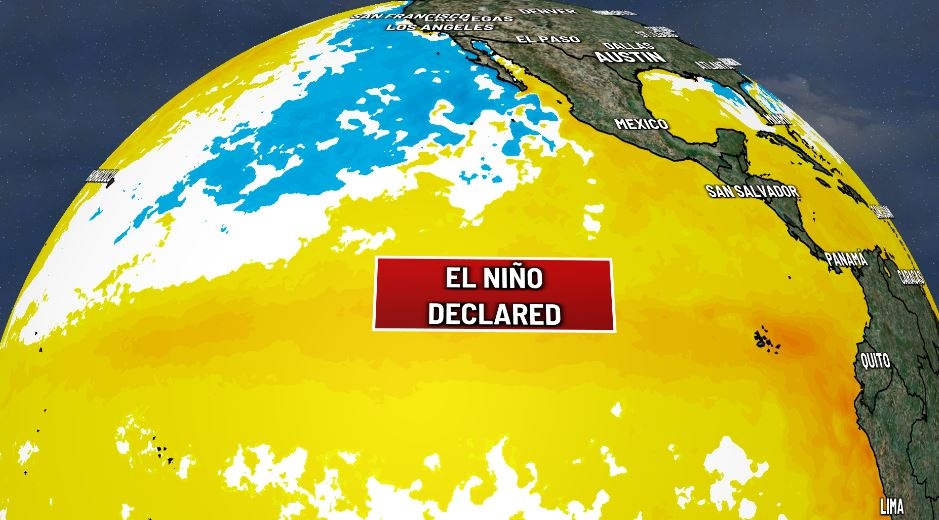American scientists from NOAA have confirmed the beginning of El Niño, which could lead to the fact that 2024 will be the hottest year on record

American scientists from the National Oceanic and Atmospheric Administration (NOAA) have confirmed the beginning of the El Nino natural phenomenon, which experts talked about a few months ago. According to a report by the BBC, scientists believe that El Nino, which is accompanied by an increase in the temperature of the surface water in the seas, could lead to 2024 being the hottest year on record. Before that, the record belonged to 2016.
One of the telltale signs of El Nino is that the water temperature in the Pacific Ocean was 0.5 degrees warmer than normal for the month during the month. According to NOAA scientist Michelle L.Hero, they are confident that the observed signs will intensify. "Over the last week, the increase was 0.8 degrees, which is even higher than the May figures," she noted.
Experts predict that El Nino will significantly affect the weather in various regions - it can bring drought to Australia, increase the amount of precipitation in the form of rain in the southern United States and weaken the monsoon in India. "A new record for global temperatures next year is very likely," says Adam Scaife, head of long-term forecasting at the UK Met Office. - "Everything depends on how large-scale El Niño turns out to be. If by the end of this year it turns out that its scale is serious, then there is a good chance of a new record."
Record hot years usually come the next year after the arrival of El Niño, Kommersant writes. Scientists are worried that this time El Niño will lead to an increase in average air temperatures on the planet by one and a half degrees with all the consequences, including economic ones. For example: El Nino in 1997-1998 cost the world 5 trillion dollars, and then about 23 thousand people died due to storms and floods caused by this phenomenon.
Analysts from the Australian Bureau of Meteorology have raised the probability of a natural El Niño anomaly in the world this year to 70%, which is 20% more than previous forecasts and three times more than the usual value. Experts also included a warning mode in their forecast. However, they explained that the warning is not a guarantee that this event will necessarily happen, but rather a sign that there are many prerequisites for it. It is predicted that the mentioned natural phenomenon will affect the production prospects of important grain and oil crops in major producing countries.
First, Australia itself will suffer. During the next two weeks, heavier rains are expected there than before. Analysts cut the forecast for the country's wheat harvest in the 2023-24 agricultural year (which runs from October to September in this case) by 34% from the same period last year, or to almost 26.2 million tonnes. At the same time, the cost of crops (on FOB terms) should increase by one percent from the level two weeks ago, or up to $288, the National Agricultural Agency reports.
Problems are also expected in a number of countries in Asia and Latin America, as confirmed by other local sources. In Malaysia, as the Minister of Natural Resources Nik Nazmi Nik Ahmad predicts, there will be a "weak" El Niño, which will affect palm oil. Earlier, the country's government predicted a severe natural disaster and estimated losses at 20%. Indonesia, according to local meteorologists, is expected to experience a drought with the loss of the harvest of raw materials for oil and the required level of humidity, as well as forest fires. The price of the product in the country has already decreased by more than nine percent to 775 dollars per ton.
Untimely rains are already falling in China, which are spoiling significant volumes of the winter wheat harvest. Then the situation can become even more complicated. According to the local Ministry of Agriculture, as of June 5, only 9.1 million hectares or 45% of the plan had been harvested. This is also 2 million hectares less than last year. In addition, usually by this time the culture in China is already gathering.
Argentina is suffering from drought in almost the entire territory, except for southeastern Buenos Aires. Average weekly temperatures are above normal. This led to a sharp decline in wheat, soybean and corn yields this season.


